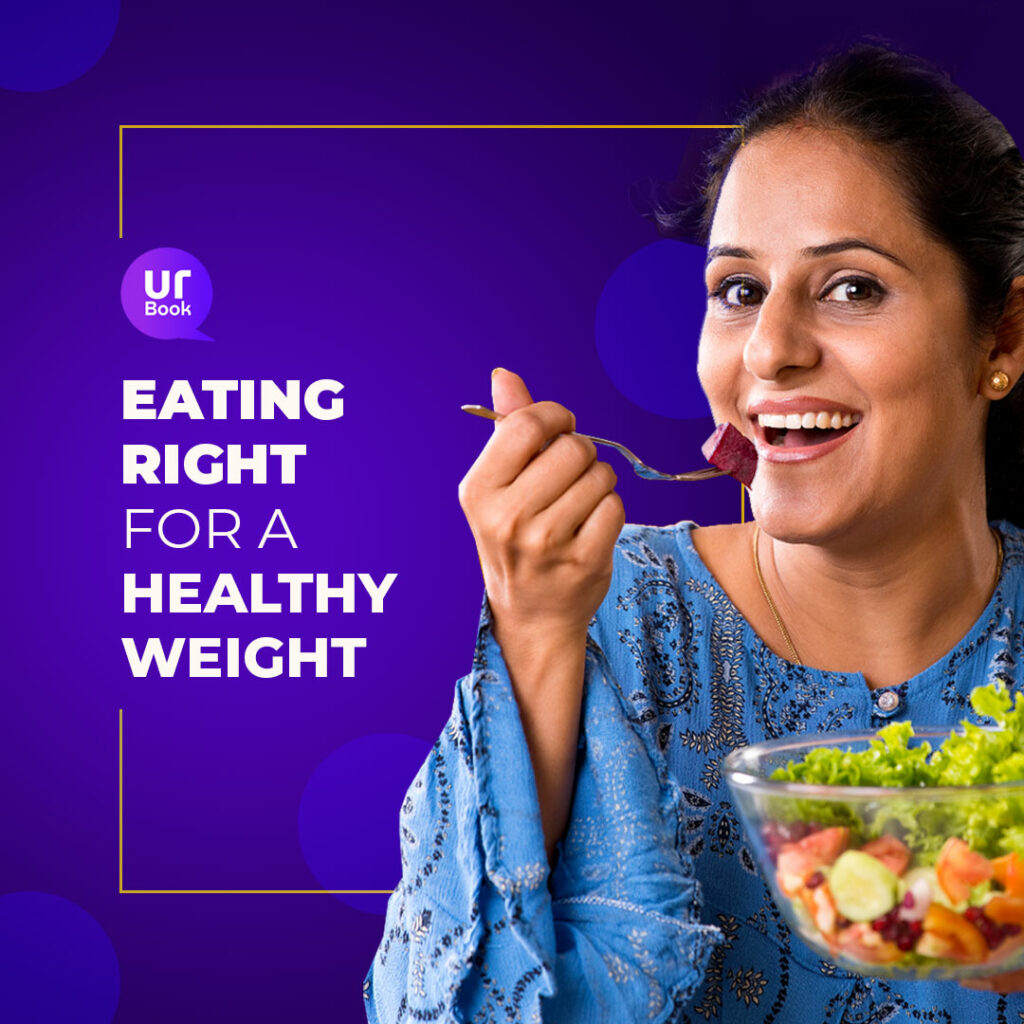
Are you looking to lose weight? Festivals are right around the corner and certainly everyone wants to look their best. What you eat is one major part of having a healthy weight. We want to talk about eating right for a healthier, fitter body. There are a lot of practices (which we’ll get to in a moment) that help achieve a healthy weight.
However, there is one golden rule.
The amount of energy you take in must be equal to the energy you burn over time. In other words, there has to be an energy balance. Your weight stays the same when calories consumed in a day are equal to calories burned.
Eat more and burn less, you gain weight. Eat less and burn more, and you lose weight.
10 Eating Practices That Move the Needle on Healthy Weight
Eating the right quantity is the essence of healthy living. But what you eat and the nutrition it provides are equally crucial. The easiest way to achieve energy balance and prevent weight gain is to make better choices even before you cook.
1. Make Better Choices
When grocery shopping, eschew foods that are calorie dense. Instead, opt for foods that pack fewer calories and fat.
- Nutrient-dense foods like fresh fruits and vegetables, legumes, nuts, and unprocessed whole grains like oats, wheat, and brown rice are good for you and must make up the majority of your cart.
- Foods like low-fat yoghurt, microwavable popcorn, processed cheese, or fruits canned in syrup should be in the minority and eaten only sometimes and in small quantities.
- Items like doughnuts, cakes, cookies, and sweetened cereals must be saved for special occasions and consumed once in a while.
2. Cook Smarter
Reduce the amount of fat in your meals by choosing to boil or steam and not fry. Substitute butter and ghee for sunflower, soybean, or canola oil as they contain good fats.
A good habit for cooking smarter is to plan meals ahead of time.
Plan and prepare at least 3 meals per day, whether they are consumed at home, taken with you to work, or packed for school. With food at hand, you’ll eat less haphazardly, and it helps keep track of calories.
3. Balance Your Plate
When making meals, consider using a variety of foods. In a day:
- Your diet should include at least 400 grams of fruits and veggies a day, not counting starchy roots like potatoes.
- Pick fresh and seasonal veggies over canned.
- Free sugars like those in fruit juices and syrups should be less than 10% of your energy intake. So, if you’re eating 2000 calories, you can have only 50 grams of sugar.
An ideal plate is half fruits and vegetables, 1/4th grains, and 1/4th lean meat.
4. Smaller Portions
A simple but extraordinary practice to eat right is to watch portion sizes. Most people tend to serve more than they need. So, reducing how much food you add to the plate becomes key to effective weight management.
Our tip? Switch to a smaller serving plate. They serve as a tactile reminder to serve less.
5. Know When Is Enough
Learn to know when you’ve eaten sufficiently. It takes the brain about 20 minutes to realise that you’ve consumed food and are full. So, by the time you think you’ve eaten enough, you’ve actually overeaten.
The trick is to eat until you’re 80% full. The Japanese call it hara hachi bu.
Get into the habit of stopping just when you start feeling slightly full. And if you’re a fast eater, slow down and give your brain the time to catch up.
Another helpful hack is to begin each meal with a salad, fruit, or raw vegetables. They pack a good punch of nutrients, are low in calories and are very filling.
6. Recognise Calories
It doesn’t matter if you’re munching on celery or sweet potato wedges; everything has calories. And, no, there are no negative calorie foods. Count the calories consumed and, if you’re working towards losing weight, follow this:
- For women, aim for 1200 to 1500 calories a day.
- For men, plan for 1500 to 1800 calories a day.
Typically, shedding 500 to 750 calories daily from your meals can lead to 450 grams to 680 grams of weight loss each week.
7. Focus On Food
Eating right for a healthy weight has a lot of moving parts. One that’s often disregarded is eating while engaged in another activity, which leads to overeating. Avoid reading, listening to podcasts, watching TV or doing work during meals. Fix a place where you sit down to only eat.
8. Be Snack Prepared
People snack. It’s a given. Rather than reaching for fried food or packaged snacks like biscuits, chips, and cookies brimming with fat and salt, pick up nuts and vegetables. They’re a delicious way of reducing your salt intake, which should be 5 grams a day and keeping hypertension and heart conditions at bay.
Keep healthy snacks nearby, like in the car or at your work desk. It limits calories, controls portions, and staves off hunger pangs.
9. Eating Out
It’s simply not possible to stop ordering in or eating out completely. Instead, ration it. Limit the number of times you eat out in a month, and when you do, make healthier choices. Pick the more wholesome items that have less sugar and fat on the menu. Ask for tinier portion sizes.
10. Food-Activity Balance
Two maxims get the motor rolling on a healthy weight: good diet and physical activity. Fitness is incomplete without regular exercise, regardless of how nutritious your meals are.
Get your body moving with any activity you prefer. It could be brisk walking, sprinting, cycling or swimming. Do it for 10 minutes at least, and as your stamina rises, increase the time.
Be Realistic with Diet and Health Goals
Contrary to what most believe, reaching and maintaining a healthy weight cannot be a short-term goal. It has to be a lifelong and overall objective. While that may appear insurmountable, there is a cheat sheet for it.
Start small. Make one realistic change to your diet plan and get comfortable practising it. Then add on another. As you begin to eat right and proactively exercise, the habits will gain more purchase with each passing day.
Finally, keep track of your regimen and, in no time, you’ll be a card-carrying member of healthy living!
